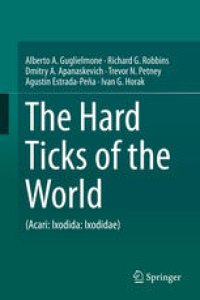
Ebook: The Hard Ticks of the World: (Acari: Ixodida: Ixodidae)
- Tags: Entomology, Invertebrates, Animal Systematics/Taxonomy/Biogeography, Parasitology, Animal Ecology
- Year: 2014
- Publisher: Springer Netherlands
- Edition: 1
- Language: English
- pdf
This book has been designed to summarize current, essential information for every one of the world’s 700+ hard tick species. Under each species name, we will cite the original description, followed by information on type depositories, known stages, distribution (by zoogeographic region and ecoregion), hosts, and human infestation (if any). Each species account will also include a list of salient references and, where necessary, remarks on systematic status. We envision eight chapters: six devoted to the major ixodid tick genera (Amblyomma, Dermacentor, Haemaphysalis, Hyalomma, Ixodes, Rhipicephalus), one covering eight minor genera (including two that are fossil), and a concluding summary chapter. There will be two tables on host associations and zoogeography in each major genus chapter, as well as five tables in the summary chapter, for a total of 17 tables. No similar synopsis of the world’s hard tick species exists in any language.
Hard ticks (family Ixodidae) are obligately blood-feeding ectoparasites of all classes of vertebrates except fishes. They occur worldwide and are preeminent among hematophagous arthropods for the variety of infectious agents that they transmit to humans and other animals. Because hard ticks have long been a focus of medical and veterinary research, the literature on this group is both voluminous and diffuse, with the result that those seeking information on a particular species are often at a loss as to where to turn. This book addresses that problem. Working as a team, six leading authorities on the Ixodidae have summarized current, essential information for every one of the world’s 700+ hard tick species. Under each species name, readers will find a discussion of the original taxonomic description, followed by sections on type depositories, known life history stages, distribution by zoogeographic region and ecoregion, principal and exceptional hosts, and human parasitism. Each species account concludes with a list of salient references and, where necessary, remarks on any unresolved issues warranting further research or important species-specific information, such as introductions into regions outside a species’ natural range or collections from novel hosts. No similar synopsis of the world’s hard tick species has ever been attempted.